
ROYAL AIR FORCE OF OMAN - LONGEST 1-11 OPERATOR
A Special article by Richard Church to mark the retirement of the type

With the retirement of the last of the Royal Air Force of Oman’s One-Elevens, it seems appropriate to record the history of these aircraft.
The Sultan of Oman’s Air Force, (SOAF) as it was called at the time, ordered three Series 485GD One-Elevens to replace its Vickers Viscounts with delivery due in late 1974. Although forward air support for the army was envisaged when choosing these specialised rough field aircraft, this role was carried out by the Shorts Skyvans and Iranian Lockheed C-130s and later the Omani Lockheed C-130s. The One-Elevens never did any rough strip operations during their thirty-five year history with the Air Force. One One-Eleven did two demonstration landings at a strip south of Salalah to show its capabilities to SOAF senior officers. The RAFO is the last original customer of new One-Elevens to still have the type operational. Initially carrying the serials 1001, 1002 and 1003, the aircraft construction numbers allocated were BAC.247, 249 and 251 respectively.
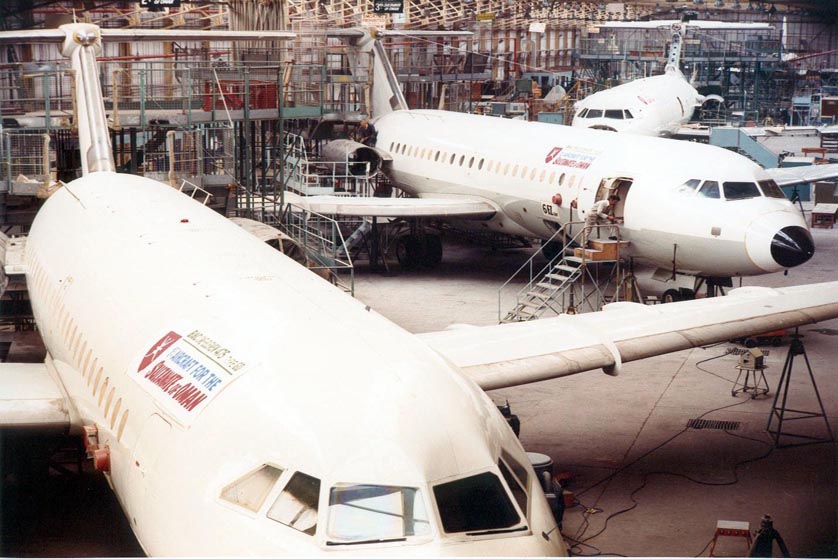
All three "SOAF" 1-11s on the Hurn production line November 1974
These were the only military Series 475s ordered new and were also the first One-Elevens modified to incorporate large main deck freight doors. All three aircraft were built as standard production airframes with the first two being delivered on 18th December 1974 and 29th January 1975.
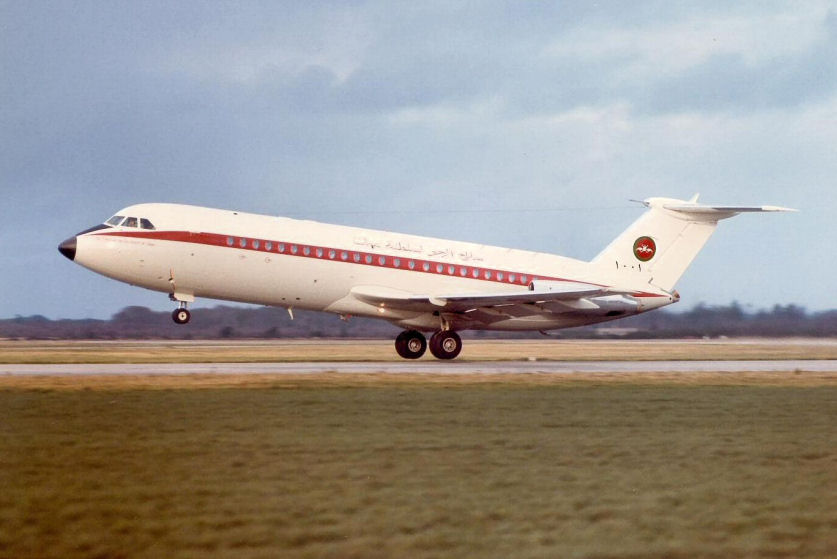
1001 first flight at Hurn 21st November 1974
The third aircraft however, returned to the hangars at Hurn for the door modification after its initial flight on 19th March 1975. It eventually took to the air again on 23rd October 1975 and was delivered to the SOAF on 1st November 1975. The organisation’s initial aircraft had in the meantime returned to Hurn for the door modification on 30th October 1975.

1003 at Hurn 1st November 1975
Not everything was to go to plan when the third aircraft suffered from a severe cockpit fire at Muscat-Seeb when the oxygen system was being replenished on 22nd November 1975 just three weeks after it was delivered. So severe was the damage that it was decided to dismantle the aircraft and ship it back to the United Kingdom by sea to Poole harbour and then by road to Hurn for repair.

1003 being dismantled for its long journey back to Hurn for repair
It was to be 23rd May 1976 before the dismantled aircraft arrived at Hurn by which time the second conversion had been completed and re-delivered to the SOAF on the 8th March 1976.
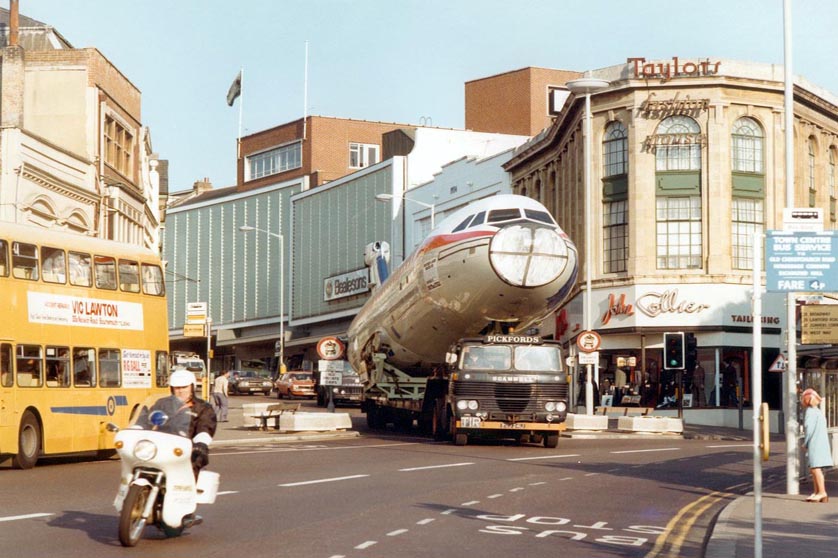
A unique photo of 1003 passing through the centre of Bournemouth on the 23rd May 1976
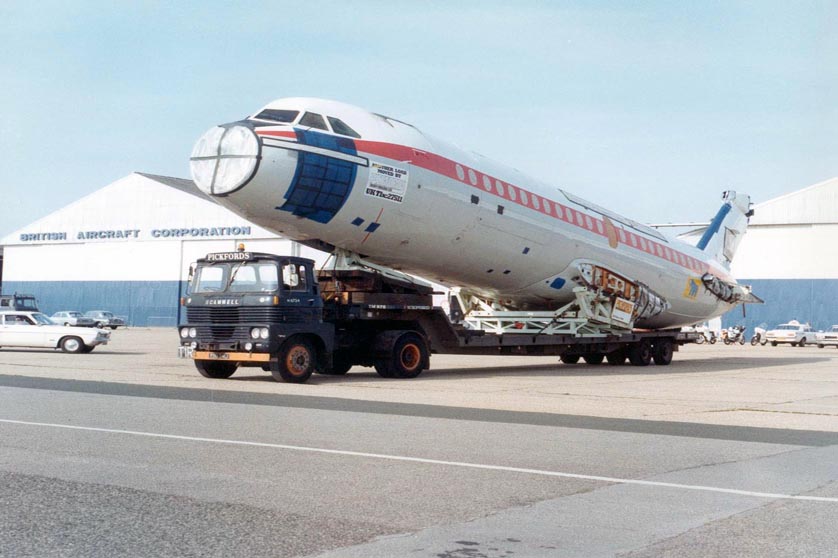
And finally arriving back at the Hurn factory
The damaged aircraft was rebuilt and redelivered to the SOAF on 26th February 1977 after taking to the air on the 7th of February. This enabled the second aircraft to return to Hurn for its Large Freight Door modification. This aircraft was redelivered to the SOAF on 7th August 1977 after it first flew on 2nd August 1977 and brought the fleet back to full strength. All three aircraft could be operated in various ‘combi’ configurations after the door mods had been completed and had their serials changed to 551, 552 and 553 in July 1976. 551 was later fitted with long range tanks in the rear of the forward hold in summer 1983, the work being undertaken by Dan-Air Engineering Ltd at Lasham in the United Kingdom. Between August and November 1991 the aircraft were all repainted in a new light blue and white colour scheme at Hurn replacing the original red and white scheme. Regular upgrades to the aircraft equipment were made including the installation of Reduced Vertical Separation System (RVSM) and Traffic Alert and Collision Avoidance System (TCAS) in later years

The only time that all three RAFO 1-11s have been photographed together in service - Seeb 3rd November 2004
The aircraft were flown to Bahrain, Egypt, Iran, Iraq, Jordan, Kuwait, Qatar, Saudi Arabia, Turkey, the United Arab Emirates and Yemen in the middle East and to India and Pakistan, as well as to Europe and were regular visitors to both Lasham and Hurn airports for maintenance. They also visited Hurn on numerous occasions carrying out cargo flights. They flew daily flights to Masirah, Salalah and Thumrayt/Thumrait from Seeb carrying army staff and their families. Standard seating layout was 79 though 551 was usually configured with 59 seats with a palette alongside the cargo door for luggage. They were used regularly for freight and medical relief flights when stretchers were fitted in the cabin. All aircraft could be configured with either a flat or roller floor which made them very flexible in the uses to which they could be put.
 .
.
A superb shot of 551 as it climbs away from Hurn on the 2nd February 2008
It was eventually decided to replace the One-Elevens with Airbus A320-214 Prestige aircraft, the first of which was delivered in December 2008 and the second in December 2009. A third aircraft is due later this year. The new aircraft do not have the flexibility of the One-Elevens since they are not fitted with main deck freight doors although Airbus are looking at a programme to install these in the future. The first One-Eleven to be withdrawn was 551 which operated its last flight from Hurn to Muscat via Bari on 30th August 2008 by which time it had flown 22,253 hours and 18,529 landings.
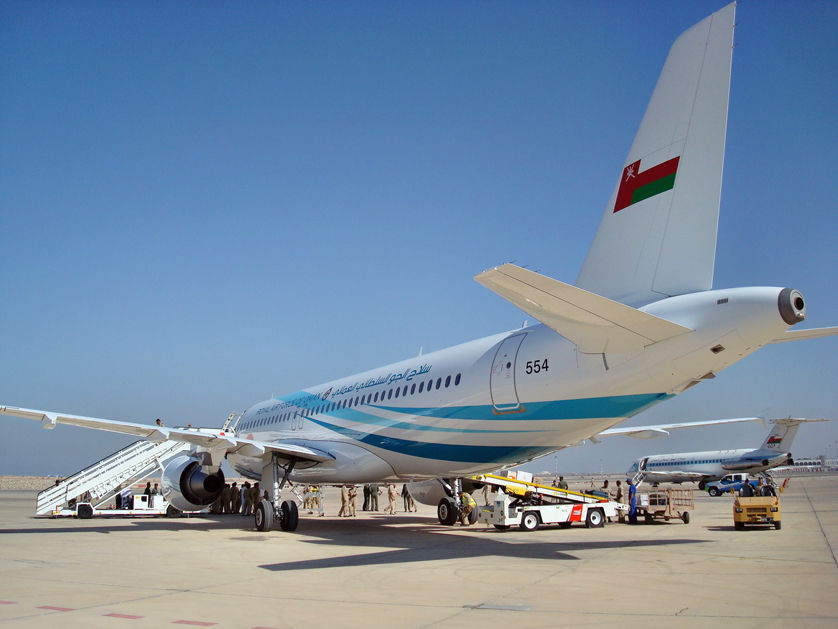
Replacement aircraft for the 1-11 fleet in company with BAC 1-11 552 at Seeb - 31st December 2008
The second aircraft to be withdrawn was 552 which was ferried to Masirah from Muscat-Seeb on 08th March 2009 by which time it had flown 29,571 hours and 24,543 landings.

552 on the 8th April 2009 after being withdrawn from use and decommisioned at Masirah
This left 553 in service with a withdrawal date finally set for the 14th July 2010. The aircraft was kept very busy flying to various destinations on many different missions. Cyclone PHET struck land in Oman at the beginning of June and destroyed most of Masirah's buildings - the BAC 1-11 was instrumental in evacuating Masirah ahead of landfall.
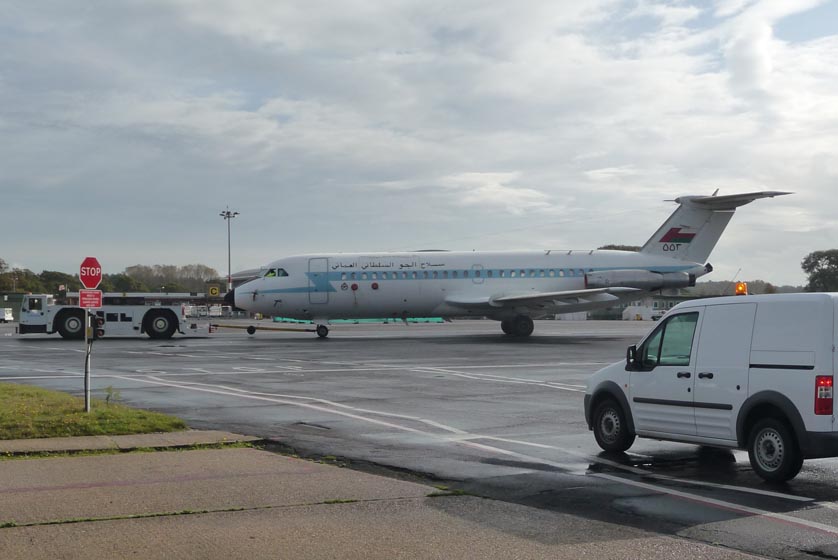
553 being towed to Cobham at Hurn on the 23rd October 2009. It arrived on 21st October and departed for the very last time on the 25th.
Although the RAFO celebrated an official retirement ceremony for the One-Elevens on 7th June 2010 with a fly-past at Seeb with an F16 on each wing tip, 553 continued to soldier on with its flying duties until the 28th June 2010 when it carried out its last sortie from Masirah Island to Seeb. It had flown 27,797 hours and 23,230 landings. The official retirement date of the RAFO fleet was Wednesday 14th July which brought to a close one of the most interesting chapters in the BAC 1-11's long and illustrious history. It is hoped that one of the aircraft will be displayed at the RAFO Museum.
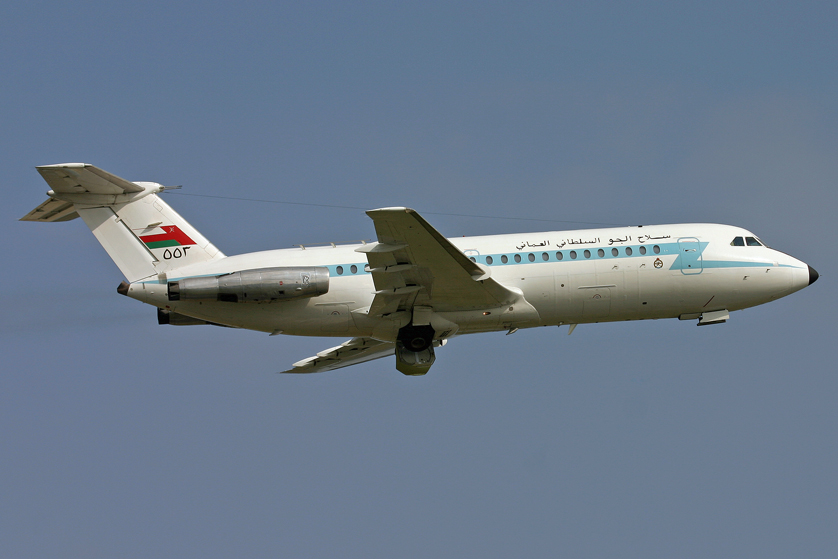
And finally - My favourite shot to finish - 553 departing from Hurn by Howard Curtis!
Richard J. Church - July 2010